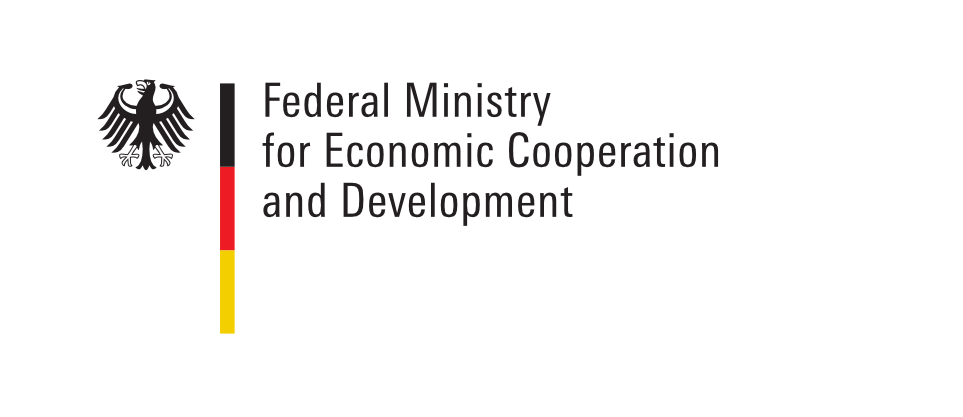- DE |
- EN
"Our Struggle for Global Sustainability Will Be Won or Lost in Cities."
Ban Ki-Moon,United Nations Secretary-General 2007-2016, in 2012
Climate change has been described as one of humanity’s greatest challenges, as it ‘threatens life and our existence’ (Ban Ki-moon, United Nations Secretary-General 2007-2016). Scientific evidence has shown that the climate system is warming and has confirmed its relation to human activities. The changes identified include a decrease in extremely low temperatures, an increase in extremely high temperatures, rising sea levels, longer-lasting droughts, large-scale forest fires, more frequent and stronger hurricanes, and an increase in heavy rainfall events in various regions of the world. As stated in the latest IPCC report each of the last four decades has been successively warmer than any previous decade since 1850. Since 1970, global surface temperature has risen faster than in any other 50-year period in at least the last 2000 years; and since 1900, the global mean sea level has risen faster than in any previous century in at least the last 3000 years. The impacts of climate change are not limited to environmental issues, specific policy areas, sectors of the economy or social groups. Its impacts are globally spread and felt especially hard in lower-income countries and by the most vulnerable part of the population.
Climate change affects everyone, but especially vulnerable groups and aggravates social inequalities
The COVID-19 pandemic has also shown that the groups most exposed to the coronavirus and the resulting economic crisis are by far the most vulnerable to the impacts of climate change, including women, minorities, marginalized ethnic groups, the elderly, informal workers and people in essential but undervalued jobs on the front lines. The COVID-19 crisis has worsen inequality and livelihoods, highlighting how deep inequalities make our global society more vulnerable. However, the pandemic response efforts have also shown important lessons that need to be integrated in order to build back better, make cities more resilient and set more ambitious sustainability goals. Urban development concepts, plans and measures need to integrate forward-thinking strategies for climate change mitigation and adaptation, as this strongly influences how cities manage the impacts of climate change.
Cities have a crucial role to play in climate protection and climate adaptation
The international community has reached a milestone with the Paris Agreement to combat climate change and to accelerate and intensify the actions and investments needed for a sustainable low-carbon future. The target of limiting the global temperature rise to below 2°C, and if possible, to 1.5°C, aims to strengthen the global response to the threat of climate change. The 2030 Agenda for Sustainable Development with its 17 Sustainable Development Goals (SDGs), the Paris Agreement and the New Urban Agenda (NUA) are three examples for global action, which highlight the fact that sustainable development, climate change mitigation and adaptation form ‘a single agenda’ where cities play a strong role. Sustainable development makes societies more resilient to climate change, while without climate change mitigation and adaptation, progress towards development can be put at risk (BMZ 2016). Thus, it is crucial to increase efforts at the local level to translate global policies into concrete actions.
The consequences of rapid urbanisation and climate change exacerbate each other
While climate change is a global challenge, mitigation and adaptation to its impacts is mainly a local one. Floods, for example, cause extensive damage to city infrastructure such as roads, electricity supply, waste management, sewage systems and water treatment facilities. Combined with rising sea levels, they can cause severe sanitation problems and paralyze the basic functions of a city for weeks. According to the United Nations by 2050, 6.5 billion people, two thirds of the world’s population, are expected to live in sprawling cities and more than 60% of the area projected to be urban in 2030 has not been built yet. Thus, cities are both drivers and victims of climate change. They consume 70 per cent of the world’s energy and contribute to the warming up of the earth’s atmosphere by producing over 75 per cent of global CO2 emissions. However, cities are also often located in high-risk areas and exposed to major risks such as sea level rise, storm surges, urban flooding, droughts, water scarcity and the heat island effect in densely built-up urban landscapes. Climate change is accelerating the impact of many threats that cities already face due to rapid urbanisation, soil sealing and increasing population.
Climate change is a cross-cutting issue that touches all areas of local government - citizen participation is crucial
Climate change impacts affects municipal services, private sector activities, the ecosystem and livelihoods of all citizens, costing lives and millions of dollars. Cities play a key role in providing a good quality of life for their citizens and can offer potential solutions to contribute to the reduction of global greenhouse gas (GHG) emissions. Climate change is a crosscutting issue that affects all areas and departments of a city administration. It therefore needs to be addressed with a cross-departmental approach and incorporated into the different levels of urban development plans and projects in cities. Awareness of climate change impacts and corresponding local adaptation strategies are essential for cross-departmental cooperation. However, unless citizens and key stakeholders are involved in the process, there is no guarantee of success. Existing urban concepts and urban models must be reconsidered in the light of climate change and incorporate climate-proof urban development principles, such as inner development before expansion in the periphery, mixed-use city of short distances, enhancing green areas in the city, and mainstreaming adaptation and mitigation into urban development (GIZ 2019).
Even if global temperature rise is controlled and GHG emissions are reduced, the impacts of climate change could remain present for centuries to come. Therefore, limiting global warming to between 1.5°C and 2°C is crucial to thrive within our planetary boundaries, avoid uncontrollable consequences, enable sustainable development and create new development opportunities.
Climate Change: a cross-cutting issue in Connective Cities
Climate change is a crosscutting topic in the activities of Connective Cities whose aspects are integrated and taken into consideration in all themes to ensure an integrated approach to sustainable urban development.
Cities are particularly vulnerable to the adverse impacts of climate change, and at the same time, they must ensure meeting essential needs such as the provision of basic urban services, housing, urban safety, fostering local economic growth or strengthening social cohesion. Cities are centres of development and they can learn from each other’s successes and challenges.
The impacts of climate change are evident in all Connective Cities’ focus regions and working groups, but this is also why cities are sharing, discussing, adapting and developing innovative solutions for climate change mitigation and adaptation. Throughout the different learning processes and exchange formats of Connective Cities, urban practitioners have the opportunity to access a multitude of good practice examples from municipalities worldwide as well as learn about innovative solutions to local challenges from other peers.
-----------------------------------------
Photo (header picture): Xurcon | istock
Good Practices
Publications
Handing Over Ceremony for the Climate-Sensitive City Development Strategy for Garowe
2024 - Workshop report on the handover ceremony in Garowe, Puntland, Somalia
Kragujevac - renewable energy in district heating
2024 - A good practice from Serbia to reduce greenhouse gas emissions
Heat in the City
2024 - The Connective Cities Deep Dive Event from 3 to 6 June in Heidelberg, Germany
Dar es Salaam Metropolitan Development Project (DMDP) - Phase 1
2024 - A Good Practice from Dar Es Salaam, Tanzania











